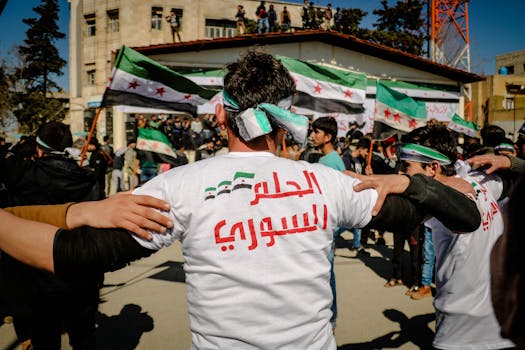
Photo by Ahmed akacha on Pexels
Introduction:
Not much is known about the Syrian revolution, as it didn’t receive as much coverage compared to other regional conflicts like Israel’s aggression in Gaza. In this post, I will highlight ten crucial facts about the Syrian civil war/revolution. This noble cause, which began in 2011 and concluded in 2024, marks a significant shift in the entire region and will have lasting consequences for the Middle East in the years to come.
-
The Birth of the Syrian Revolution: The Syrian revolution began in Dara’a when kids made anti-Assad graffiti. Assad forces responded with arresting and torturing the kids. One 13-year-old kid, Hamza Ali Al-Khateeb, was [brutally murdered](The Murder of Hamza Ali Al-Khateeb "Murder of of Hamza Ali Al-Khateeb"). So it all started with kids, and it could’ve just have ended there if Assad had been a bit wiser.
-
It Started Peacefully: During the first 6 months, the protests were mostly peaceful, demanding basic human rights. But they were met with brutal crackdowns from security forces, leading to hundreds of protesters losing their lives during that period alone.
-
Regime Defectors: Many members of the Free Syrian Army are those who defected from regime forces because they refused orders to kill protestors. The most predominant figure during the early stages of the revolution was Officer Riad Al-Asa’ad, who founded the Free Syrian Army and defected on 4 July 2011. But the rebel movement brought together all sorts of people and groups standing up against the Ba’ath Party’s harsh rule, not just those who left the military.
-
The Capital of the Revolution: Homs earned the nickname "Capital of the Revolution," showing its brave resistance against the regime. This Syrian city was one of the first cities to join the uprising against President Bashar al-Assad in 2011, and it quickly became a stronghold for rebel forces.
-
The Muslim-Christian Unitiy: During the revolution, Christians and Muslims worked together, organizing protests and offering safe spots for activists, breaking down sectarian divides. One notable Christian was [Bassel Shehadeh](Bassel Shehadeh "https://www.npr.org/2012/05/29/153937342/student-helped-the-world-see-inside-a-ravaged-syria"), who was killed by regime forces in Homs in
-
The Release of Dangerous Prisoners: The Assad government released some dangerous criminals from jail to weaken the uprising but targeted peaceful activists for arrest and torture instead. Many of these released prisoners later formed their own armed groups, which contributed to portraying a negative image of Syrian rebels in the Western media.
-
The Revolutionary Art: Creativity thrived throughout the revolution, with walls turning into colorful murals and graffiti that expressed defiance and hope. The Revolutionary Art was an effective method to anonymously convey powerful messages without risking direct confrontation with regime forces.
-
Overcoming Media Censorship: Amid internet and other media strict censorship, Syrian activists smuggled USB drives and video recordings to show the world the brutal reality of the regime. One famous case was a Syrian defector codenamed Ceaser, who managed to smuggle tens of thousands of torture images from Assad’s prisons. This resulted in the imposition of sanctions on Assad's regime and the formation of a more cohesive international position.
-
The Turkish Intervention: The Turkish invasion of Northern Syria in 2016, called Operation Euphrates Shield, halted Assad’s and Russia’s total victory that year. By then, Syrian rebels had lost most of the areas they controlled, except for Idlib, which is located on the border with Turkey.
-
Gaza War: The Gaza war contributed significantly to the fall of Assad’s regime. With Hezbollah occupied in Southern Lebanon against Israel’s ground invasion and Israel intensifying its attacks on Iran’s allies, the rebels of Syria found an opportunity to act against the embattled regime.